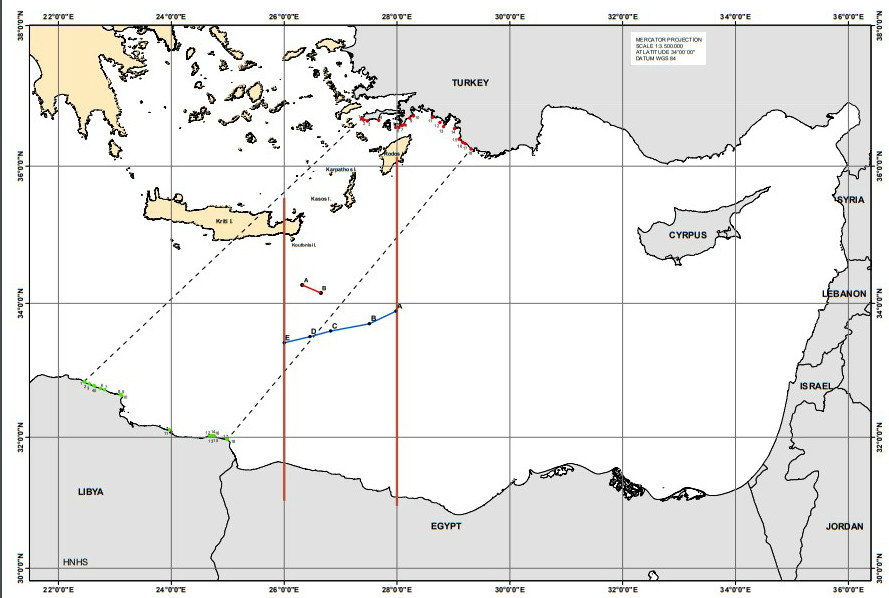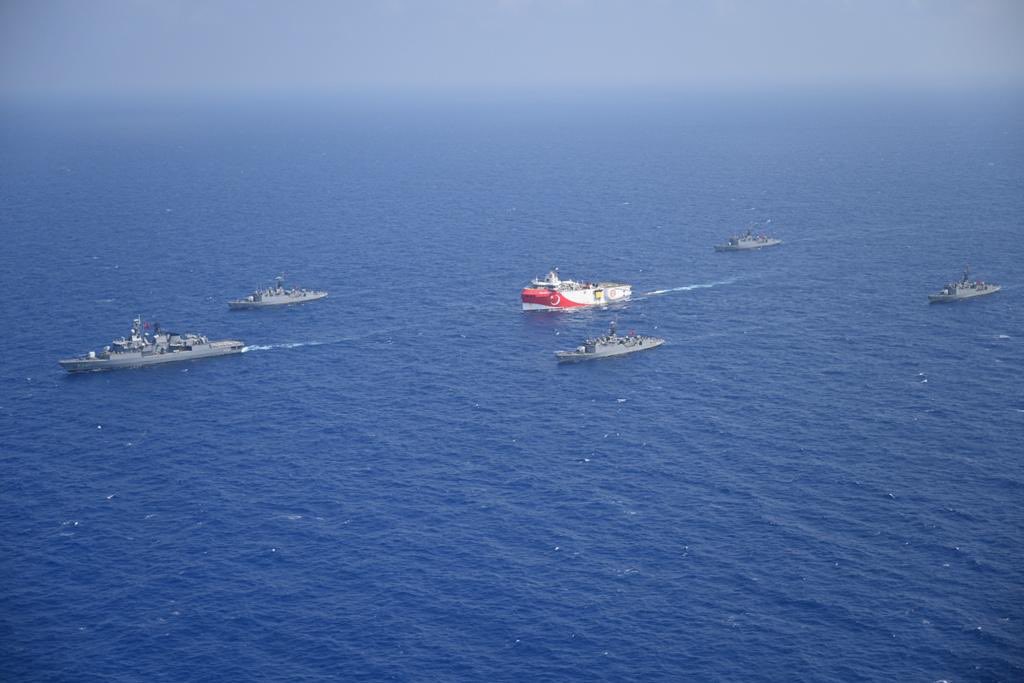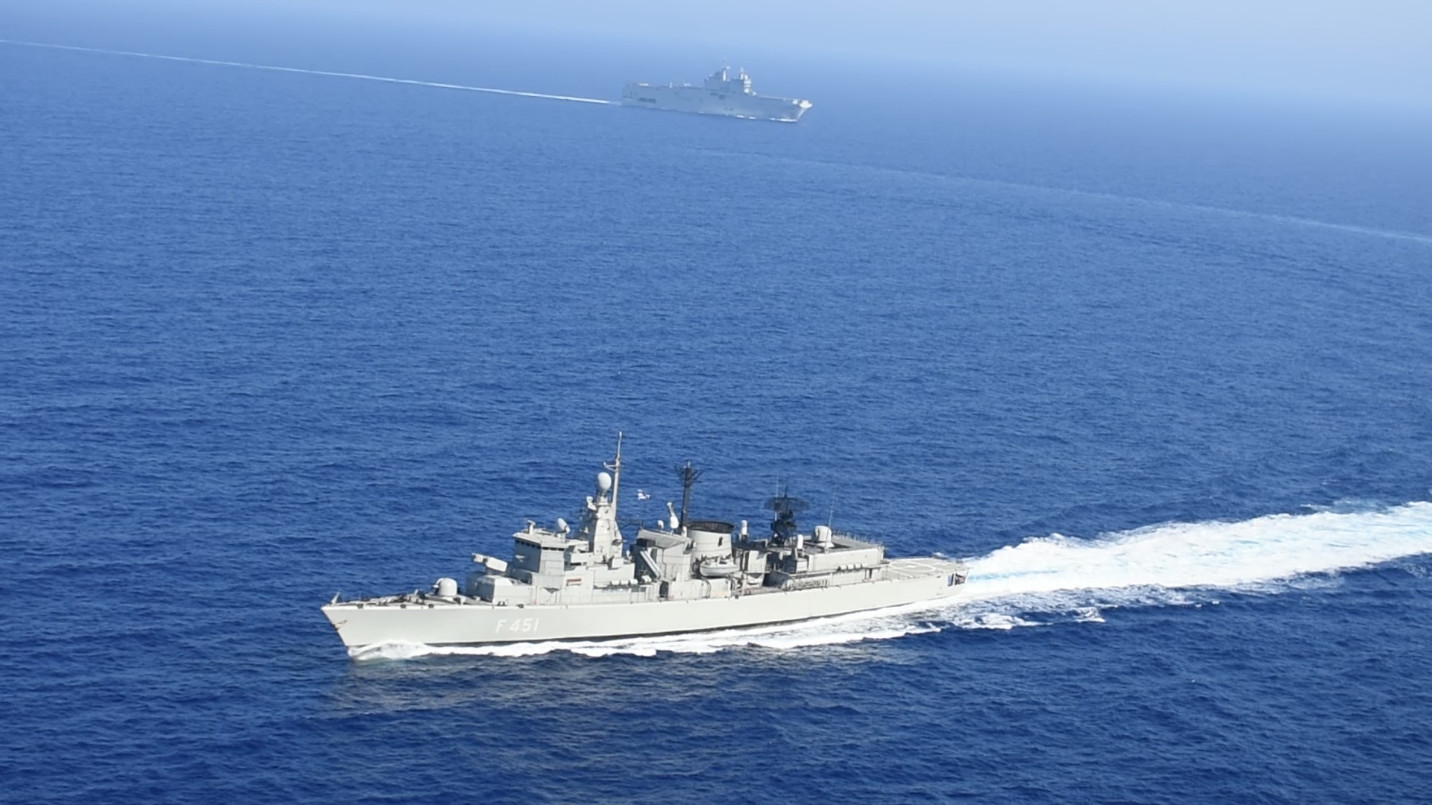August 15, 2020

by Kakaouskia for the Saker Blog
Greetings to the Saker community and readers.
Summers tend to be warm in East Mediterranean and not just due to weather. This one is no exception with Greece and Turkey apparently determined to make a stand for what each perceives to be its waters and Exclusive Economic Zone.
Before I delve into the existing situation, I feel that some background information is required: about every 12-15 years or so tensions flare up between Greece and Turkey in the Aegean / East Med. Apart from the historical grievances certain parts of the population feel are important to correct, the main reason is the natural resources apparently present.
There was the war of 1974, between Cyprus and Turkey were Greek and Turkish army units actively fought each other.
Then there was the crisis of 1987 were Turkey declared that their research vessel Hora was to conduct research for hydrocarbons in the Aegean. The Greek government of the time deployed the fleet with orders to sink the Hora and in a major political coup made an agreement with Bulgaria (Warsaw pact still existed then) to provide military assistance in the event of a war with Turkey.
After that there was the Imia incident in 1996; again, fleets were deployed, special ops teams from each country took over some rocks and it almost blew into a war. You can see the pattern.
This time the theatre of operations is in the East Med, the area south east of Crete and Kastellorizo. For the first time not only are there confirmed gas and oil deposits, the political and economic landscape allows for the utilisation of said deposits. Thus, the focus of all countries in the region is there.
At first Turkey focused on Cyprus as it was the first country to ascertain claim of an EEZ and license drilling rights to French and Italian companies. Turkey hired a Norwegian crew to conduct hydrocarbon surveys in Cyprus’s EEZ; after Cyprus issued international arrest warrants for illegal activities the Norwegians withdrew, and Turkey changed strategy by deploying its own vessels with Turkish crews and always under naval escort.
Sidebar: Cyprus being a small country with an economy that cannot sustain a serious air force or navy recently announced that it has come into a defence agreement with France. The diplomatic language was deliberately vague; however, rumours have it that France will have a quasi-permanent naval presence in Cyprus. Moreover, according to the Cyprus ministry of Defence Cyprus ordered Exocet Blk3 anti-ship missiles and Mistral manpads from France in a deal worth €240M. The Exocet Blk3 has a range of ~200Km and a land attack capability, a first for Cyprus.
Then this year Turkey reached an agreement with the Libyan “government” that marked the EEZ zones of each country. The biggest problem with this agreement is that it not only encroaches into the Egyptian EEZ, it also completely ignores the presence of Greek islands and runs over them:

Greece countered by making a similar agreement with Egypt that partially marks the EEZ of each country (the blue line on the unofficial map) and which is pending ratification from the respective parliaments. The area east of the 28E line has been left deliberately out of the negotiations as it requires an agreement between Greece, Turkey, Cyprus and Egypt.

The proposed East Med pipeline is expected to pass from that are as well:

Turkey reacted to the agreement by deploying the survey vessel Oruç Reis with an escort of 4 (out of the 6 active) Burak class light corvettes (former French D’Estienne d’Orves-class avisos) and F-247 TCG Kemalreis, a Meko 200 TN track II frigate. This force is of moderate strength; while Kemalreis is a relatively modern ship, the corvettes are more of a token force.

Oruç Reis escorted by Turkish navy. Note that this formation is for the photo shoot; it is impossible to conduct hydrocarbon surveys like this.
Greece deployed part of its fleet to monitor the situation and cancelled the leave of military personnel. This resulted in a collision incident between F-451 Limnos (S class frigate) and F-247 TCG Kemalreis. Both countries claim their vessel damaged the other and both released images / videos to show that their respective ship remains operational.
Video supposedly showing Kemalreis after the collision with Limnos:

Limnos after the collision with Kemalreis. The lack of any “unofficial” videos of the collision so far is notable and says something about the information controls in place on both sides. In any case the truth, or at least solid indicators as to what really transpired will be revealed once both ships return to port.
The story of Greece has more credibility though as the image is guaranteed to have been taken after the event and in the present of witnesses; the day after the collision Greece and France conducted a joint naval exercise involving the following ships:
F-453 Spetsai (Meko 200 HN frigate)
F-451 Limnos (S class frigate)
F-460 Aigaion (S class frigate)
F-462 Kountouriotis (S class frigate)
FS La Fayette (La Fayette class frigate)
FS Tonnerre (Mistral class amphibious assault helicopter carrier)
Two French Rafale planes also participated in the drills and they used the facilities of 115 Combat Wing, Souda Bay.
Video of the Greek – French flotilla during the drills: https://youtu.be/gdojh9hWDoA
Based on the available open-source information, it is evident that Greece deployed a more substantial naval force to counter the Turkish threat. From a military point of view Turkey has the tactical advantage as the theatre of operations is closer to its shores and it can deploy additional forces faster if need be. Moreover, Greece cannot afford to risk the safety of the myriad of populated islands some of which are located closer to Turkey (one can say swimming distance).

Map roughly depicting the area of operations and distance from Attalya in Turkey and Souda Bay in Greece.
Greece is at a disadvantage as it is forced to react to Turkey’s movements. An EEZ is not equal to the territorial waters of a country; ships, even military ones, have the right of unopposed transit provided they do not engage in military / economic activities. Greece has no legal right to block the movements of the Turkish flotilla; it will have such a right if Oruç Reis starts conducting a survey. Even then, the acceptable process is to ask the ship to stop such activity and if it does not comply then board and arrest the captain. Oruç Reis is still a civilian vessel and one does not fire on unarmed civilian vessels.
Turkey on the other hand aims to demonstrate that Greece, claim or no claim over those waters cannot protect them effectively thus discouraging big oil from signing exploration / drilling contracts with Greece. A similar tactic was used against the French navy outside Libya during EU operation Irini. A French vessel tried to inspect a freighter suspected of carrying arms in violation of the embargo, only to be prevented by a passing (read escort) Turkish navy vessel that responded to the freighter’s captain request for help. In that case a few days after France complained and Turkey ignored them, unknown aircraft attacked the Libyan air base Turkey was using.
Militarily Greece and Turkey are practically equal. Turkey has an advantage in the form of air refuelling aircraft which allow its fighters to operate for longer periods of time in theatre and carry more weapons. Additionally the Turkish frigate force has 8 modernised Oliver Hazard Perry (OHP) class frigates which provide air cover to the fleet utilising Standard SM1-MR missiles. While the missiles themselves are considered obsolete and have been withdrawn from USN service, the Greek navy does not have such capability and relies on the protection of the Greek air force.
Greece on the other hand has the advantage given by the Mirage 2000 and Mirage 2000-5Mk2 aircraft bought from France. Unlike the US which has denied weapon sales to Greece in the past in order “not to shift the balance of power” France has provided Greece with ~100 Scalp EG cruise missiles for use by the M2000-5 aircraft giving the Greek air force sub-strategic strike capabilities as the export version has a range of 560Km. This is one of the reasons Turkey decided to purchase the S400 SAM complexes. Greece also invested heavily on the Exocet anti-ship missile in all its forms (air, ship and surface launched variants). The older M2000 aircraft of Greece can carry 2 such missiles each making them effective ship hunters over the Aegean. The surface launchers are mobile and can be placed on any island creating access denial areas.
Greek Mirage armed with Scalp cruise missile, courtesy of Hellenic Air Force:
Both countries have a similarly sized submarine fleet; Turkey with 12 subs (German Type 209 variants) and Greece with 11 (German Type 209 and Type 214 variants). Greece has a quality advantage here for the time being as 5 out of the 11 subs are equipped with air-independent propulsion systems and 4 of those being of the newer Type 214.
Sidebar: It is safe to assume that both countries have deployed at least part of their submarine force; the location and actions of said force will be very well hidden unlike surface combatants.
Notably Turkey did not deploy any of its OHP frigates in the East Med area; most likely they act as submarine hunters in the Aegean and as a missile shield for important installations / formations. As the operational status of the S400 complexes is not known, Turkey has no other long-range SAM option; the MIM-23 Hawk system is practically obsolete as recent events in Libya showed.
The militaries of both countries are plagued by problems. Turkey is facing financial difficulties; the officer corps suffered a blow from the purges after the failed coup against Erdogan that as word has it has not yet recovered from; the active involvement in Syria and Libya is occupying resources that cannot be used in the Aegean. The chart below compares the Turkish Lira with USD over the past 5 years. The seriousness of the problem is evident:

Turkey has poured a considerable sum of money into its defence industry, sometimes to the detriment of other areas of the economy. These investments have yielded products that however remain largely used only by Turkey thus any claims for their effectiveness remain to be proven.
For Greece, the years of being under IMF and EU monetary supervision have had their toll. Effectively Greece allocates €500 million per year for armaments; an amount that is inadequate. Recently negotiations between France and Greece for the purchase of Belhara class frigates have broken down due to cost. Moreover, in recent years the purchase and modernization choices for the Greek armed forces have been bizarre to put it mildly. It is said that major equipment is suffering from availability issues due to lack of spare parts and that even the newest Type 214 subs still operate with incredibly old torpedoes that partially negate the advantages of the platform. Also after a series of corruption scandals involving past ministers of defence that concluded in jail terms, the Greek parliament enacted an anti-corruption law aimed at defence procurement that makes it virtually impossible to sign any such contract, even a simple contract for spare parts from the sole manufacturer on the planet.
For now, the game of cat and mouse in East Med continues. Oruç Reis is practically bait Turkey is using to lure Greece into opening fire first. Greece is keeping its distance monitoring for any movement against an island. Neither country really wants to start a war, or at least to be viewed as being the one which started it. Whatever the case militaries cannot be constantly deployed; attrition, both material and of personnel is a fact of life and at some point, something will give.
Filed under: Bloody Gas, Bloody Oil, Egypt, France, Greece, Libya, Turkey | Tagged: Cyprus, East Med pipeline, Greek islands |
 RSS Feed
RSS Feed















 August 17th, 2020
August 17th, 2020  Awake Goy
Awake Goy  Posted in
Posted in  Tags:
Tags: 













